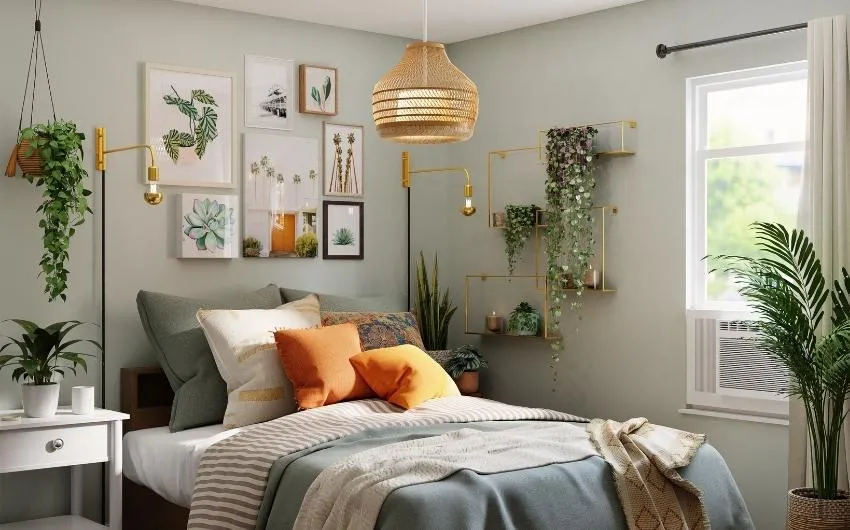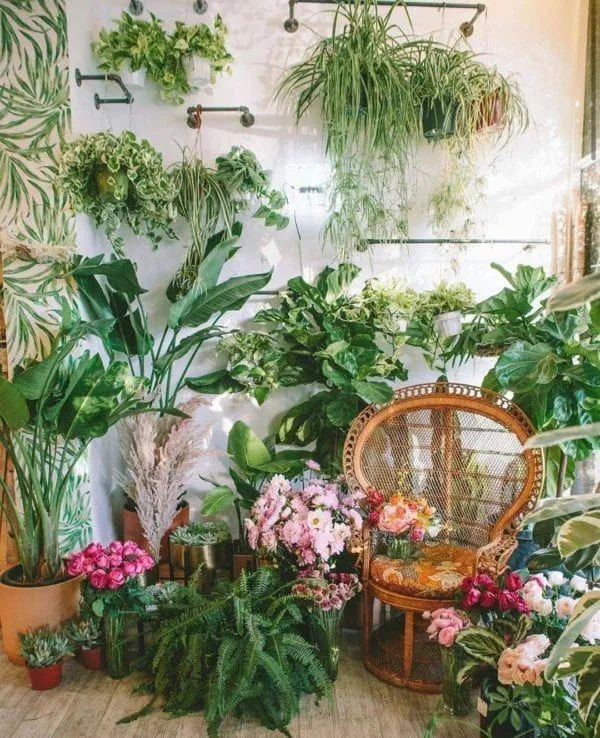Plants for Decorating Your Home and Garden
Adding plants to your indoor and outdoor living spaces can provide numerous benefits from bringing natural beauty to boosting mood and wellness. Whether you have a yard, patio, balcony or windowsills, the right plants can enhance any area. In this article, I’ll discuss some top options for plants decoration and how to care for them.
Popular Houseplants
Starting inside the home, some of the easiest and most rewarding houseplants to grow include:
- Pothos – With its heart-shaped leaves and trailing vines, pothos is virtually indestructible. It thrives in low to medium light and tolerates neglect well. Just water when the soil slightly dries out.
- Snake plant – Also called mother-in-law’s tongue, this plant is tough as nails. Its long, upright leaves add nice texture and flourish with very little water – about once every 2-3 weeks.
- Chinese evergreen – With its colorful, pebbled leaves available in various shades, Chinese evergreen brightens any space. Water when the top inch of soil dries and keep in medium light.
These low-maintenance plants are great for beginners and require minimal care beyond watering. They release oxygen and remove indoor toxins like formaldehyde, making them practical plant-based home decorators.
flowering Houseplants
For a more colorful twist, consider blooming houseplants like:

- Peace lily – With its pure white flowers and versatile leaf pattern, peace lily freshens indoor air. It signals when to water by drooping leaves – just water thoroughly when this happens.
- African violet – Featuring cute pink, purple, white or multicolored blooms, African violet creates a cheery vibe. Keep it in bright, indirect sunlight and moderate water.
- Orchid – Whileorchids require more care, their stunning tropical flowers make them worth it. Give them bright light and allow the potting mix to dry between waterings for success.
These flowering varieties inject colorful visual appeal and natural aroma into any room. With some basic care like watering on the dry side, you can happily enjoy their beauty year-round indoors.
Outdoor Container Gardens
For greenery outside, container gardens lend flexibility and portability. Here are some top picks:
- Petunias – In an array of vibrant hues, petunias inject instant curb appeal. Whether in sun or partial shade, their cascading blooms thrive from spring to fall.
- Geraniums – Available as annuals or perennials, geraniums flower continuously and handle heat and humidity like a champ. Their small leaves come in red, pink, white or multicolor.
- Calibrachoa – Mimicking tiny petunias, calibrachoa bloom nonstop with little care needed. Their small stature suits window boxes, hanging baskets and more.
- Lavender – Beyond its lovely fragrance, lavender blooms beautifully and backs many pollinator-friendly plants. Give it full sun and well-drained soil.
With their durability and vibrant flowers, container gardens like these create visual appeal anywhere outdoors. Plus, you have flexibility to move them based on sun exposure.
Garden Beds and Borders
For larger landscapes, perennials, shrubs, vines and groundcovers bring lasting beauty and function to beds and borders:

- Hostas – Available in a wide array of variegated green and purple leaf shapes, hostas thrive provides lush foliage. They tolerate sun or shade very well.
- Daylilies – With strappy leaves and funnel-shaped blooms lasting just one day, daylilies come back year after year with minimal care. The blooms arrive in early summer.
- Hydrangeas – Their large flowers bloom white, blue or pink depending on soil pH. Grow them in full sun or partial shade for long-lasting color.
- Ivy – Whether English ivy for groundcover or Boston ivy for walls, ivy spreads gracefully. It thrives in sun to deep shade.
- Black-eyed Susans – These yellow-centered flowers brighten up beds from summer into fall. Deadhead regularly for reblooming. Give them full sun.
Properly choosing perennials suited to your climate ensures beautiful, low-maintenance beds and borders year after year. Their seasonal foliage and flowers create an appealing natural landscape.
Creative Planting Spots
Beyond conventional pots and garden beds, plants can also enhance other areas like:
- Window boxes – Herbs like parsley, thyme and oregano pair well with trailing petunias and ivy for a lush window display.
- Hanging baskets – Combinations of trailing plants like ferns, vinca and calibrachoa look stunning cascading over edges.
- Curbside planters – Withstands foot traffic while elevating a home’s curb appeal.
- Railway ties or half whiskey barrels – Add structure and interest when planted with groupings of flowers, foliage, and textures.
Think outside the box for creative ways plants can enhance nooks and crannies anywhere outdoors. Their natural charm aesthetically improves any space no matter how unconventional.
In conclusion, incorporating lush indoor plants, outdoor landscaping and imaginative plantings brings wellness, beauty and joy all year long. Choosing durable varieties suited to conditions ensures success with minimal care. So get out there and start decorating – your home and soul will thank you!

Plants for Decorating Your Home
| Plant | Care Level | Light Needs | Size |
|---|---|---|---|
| Pothos | Low | Low to Medium | Small to Medium |
| Snake Plant | Very Low | Low | Medium to Large |
| ZZ Plant | Low | Low to Bright Indirect | Small to Medium |
| Spider Plant | Low | Low to Bright Indirect | Small to Medium |
| Peace Lily | Low | Low to Medium | Small to Medium |
FAQ
-
Can I use any plant for indoor decoration?
While many plants can beautify indoor spaces, not all are suitable. Some varieties need specific care that may be difficult inside. It’s best to check if a plant thrives in low or bright light before bringing it indoors.
-
How often do I need to water decorative houseplants?
Watering frequency varies depending on the plant. As a basic rule, check the soil in the top few inches. If it seems sorta dry, give it a drink! Most plants do fine being watered around once every 7-10 days.
-
Is it hard to care for plants indoors?
Caring for houseplants isn’t too tough as long as you meet their basic needs for light, water, fertilizer and occasionally repotting. The hard part seems to be remembering their individual requirements! Keeping plant care notes will help you avoid any mishaps.
-
What’s the easiest indoor plant to look after?
Pothos and snake plants are notorious for being nearly impossible to kill. They can handle low-light and forgiving of missed waterings. Peace lilies also tend to indicate when they want a drink by drooping leaves – so they’re quite user-friendly too.

-
Will plants remove toxins from indoor air?
Some studies show that certain plants can help absorb chemicals like formaldehyde, benzene and trichloroethylene. English ivy and bamboo palms reportedly do an awesome job of this. However, you’d need a truly massive quantity of plants to meaningfully clean a whole house! Proper ventilation appears key too.
-
What’s the best way to display houseplants?
Get creative with plant displays! Cluster them on tables, hang pots from ceiling racks, line a windowsill – wherever they can bask in nice natural sunshine. You can also make a bold statement with a large tropical plant in the middle of a room. Surrounding them with decorative pots or plant stands allows many options for arrangement.
-
How do I keep my plants looking good?
Besides regular watering, fertilizing once a month in the growing season helps plants stay healthy and foliage stay green. Remove any dead or diseased leaves. Dust leaves occasionally since dirt can block sunlight absorption. Trimming and repotting promotes new growth too. With a little TLC your plants will wow guests for months, or maybe even years!
